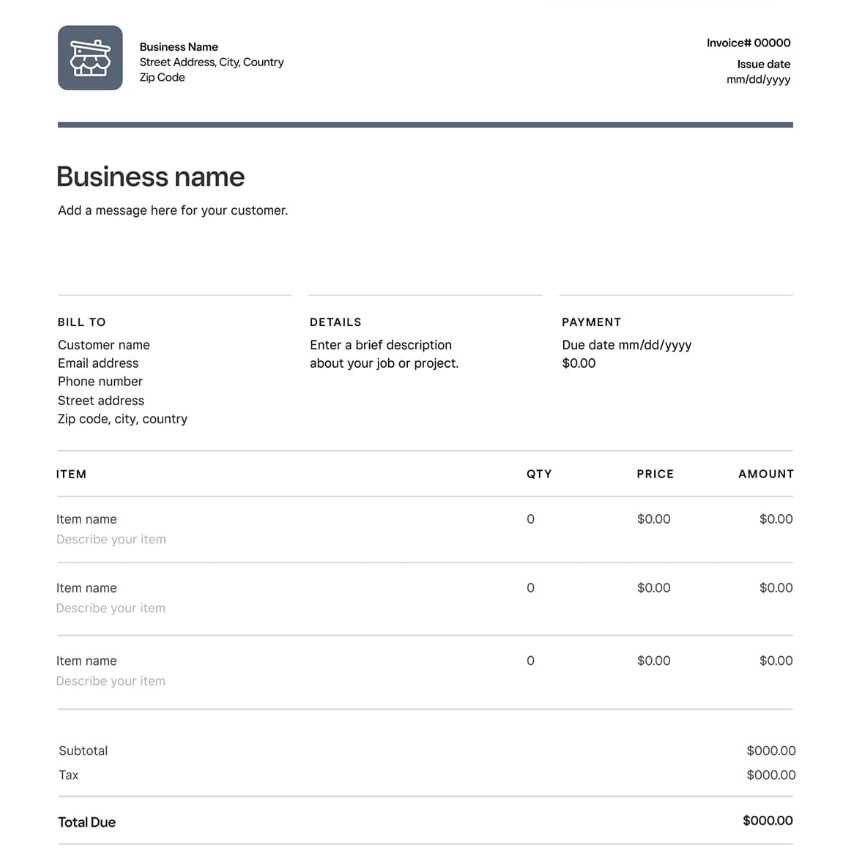Invoices are essential documents for businesses of all sizes, as they serve as a record of goods or services provided and the corresponding payment. However, designing an invoice can be a daunting task, especially if you want to maintain a professional and efficient image for your business.
Fortunately, with the use of modern technology and design tools, creating efficient invoice template has become easier than ever. In this article, we will discuss some tips and tricks for designing efficient invoice templates that will help streamline your billing process.
The Importance of an Efficient Invoice Template
Before diving into the design tips, let’s first understand why having an efficient invoice template is crucial for your business.
- Saves Time: An efficient invoice template can save you time by automating certain processes, such as calculations and data entry. This allows you to concentrate on other crucial activities.
- Improves Accuracy: With automated processes, the chances of errors in calculations or data entry are significantly reduced, improving the overall accuracy of your invoices.
- Enhances Professionalism: A well-designed invoice template reflects positively on your business, giving a professional image to your clients. It also fosters trust and establishes credibility with your clients.
- Faster Payments: A clear and organized invoice template can speed up the payment process, as clients will find it easy to understand and make payments promptly.
Now that we understand the importance of an efficient invoice template let’s look at some design tips to help you create one for your business.
Design Tips for Efficient Invoice Templates
- Keep it Simple: The key to an efficient invoice template is simplicity. Avoid cluttering your invoice with unnecessary information or complex designs. A simple and clean layout makes it easier for clients to understand and process the invoice.
- Include Essential Information: Make sure to include all the necessary information, such as your business name, contact details, client’s name and address, invoice number, date, and details of goods or services provided.
- Use Consistent Branding: Your invoice template should be consistent with your brand’s visual identity. This helps create a cohesive image for your business and improves brand recognition.
- Utilize Technology: Take advantage of technology to automate processes like calculations and data entry. This approach will not only expedite your tasks but also enhance precision.
- Use Clear and Readable Fonts: Choose fonts that are easy to read and avoid using multiple fonts in your invoice template. This will ensure that your clients can easily understand the information on the invoice.
- Organize Information Clearly: Use headings, subheadings, and bullet points to organize the information on your invoice clearly. This makes it easier for clients to read and understand the invoice.
- Customize for Different Clients: Consider customizing your invoice template according to different clients’ needs. This could include adding specific fields or using a different color scheme.
- Add Payment Options: Make it easy for clients to pay by including various payment options on your invoice, such as credit card, bank transfer, or online payment platforms.
Adopting a Mobile-Friendly Design
In today’s fast-paced digital world, ensuring your invoice template is mobile-friendly is non-negotiable. A significant number of clients prefer to view and process invoices on their smartphones or tablets. This adaptation towards mobile usage means designing your invoice templates with responsiveness in mind, allowing them to adjust seamlessly across different devices. Not only does this improve accessibility, but it also caters to the convenience of your clients, potentially speeding up the payment process as they can make payments on-the-go.
Leveraging Invoice Management Software
For those looking to further streamline their invoicing process, leveraging invoice management software can be a game-changer. These software solutions offer a range of features from creating and sending invoices to tracking payments and generating reports. Implementing such systems can dramatically reduce the time spent on manual invoice creation and follow-ups, contributing to better cash flow management. Additionally, many of these platforms include templates that can be customized to suit your business’s branding and specific needs, providing a perfect blend of efficiency and personalization.
Conclusion
In conclusion, efficient invoice templates are essential for streamlining your billing process and improving the overall image of your business. By following these design tips and leveraging technology, you can create professional and customized invoice templates that not only save time but also enhance customer experience and encourage timely payments. Remember to regularly review and update your invoice template to adapt to changing business needs and maintain an efficient billing process. Keep it simple, organized, and branded, and you’ll be on your way to creating efficient invoice templates for your business. So why wait? Start designing your efficient invoice template today!
